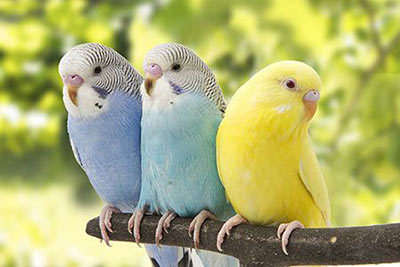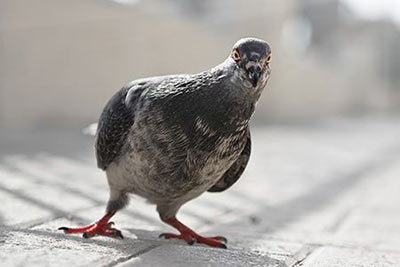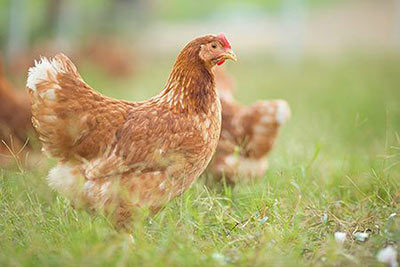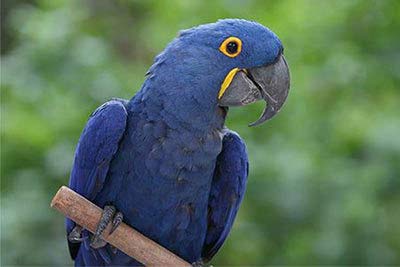Eagle Owl
Eurasian Eagle Owl Facts
| Size | 24-28 in (62-73 cm); up to 6.2 ft (1.88 m) (winspan) |
| Speed | Up to 31 mph (50 km/h) |
| Weight | 4.4-7 lb (2-3.2 kg) |
| Lifespan | 25-50 years |
| Food | Small mammals and vertebrates, birds, insects |
| Predators | Foxes, martens |
| Habitat | Europe, Asia, northern Africa |
| Order | Owls |
| Family | True owls |
| Scientific name | Bubo bubo |
| Characteristics | Large feathered ears |
Main Characteristics
The eagle owl is a large owl with a powerful body and striped feathers. Its most striking feature is its feathered ears. As a habitat, it prefers a mixture of hedges, bushes, fields, forests and water bodies.
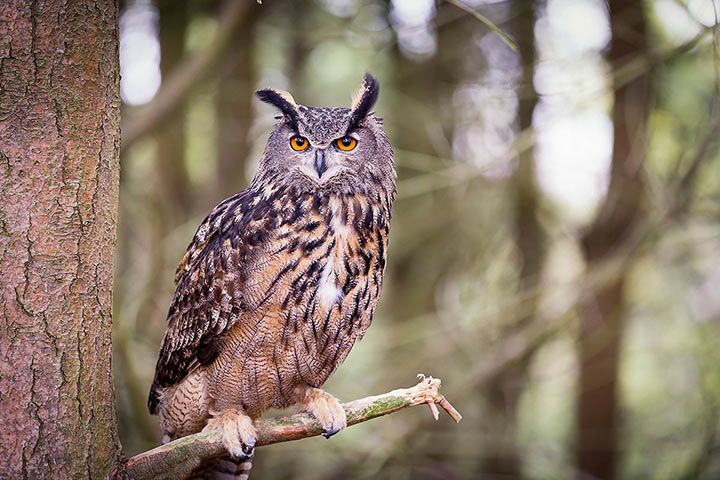
From here you find facts written by animalfunfacts.net fan SarahR:
 Anatomy and Appearance
Anatomy and Appearance
They Can Turn Their Heads 270°
To, fro, and around - it’s not hard! Well, it can’t quite manage to look all the way around but the Eurasian eagle-owl, like all owls, can turn its head 270°! Owls can’t move their eyes, so need a very movable head for hunting.

Behavior
They Are Silent Hunters
When the Eurasian eagle-owl flies, you can hardly hear its wings. This is because the Eurasian eagle-owl has several small, soft feathers that are fringed at the ends. These almost swallow the sound created by air rushing past. This means that prey can’t hear the bird as it hunts.
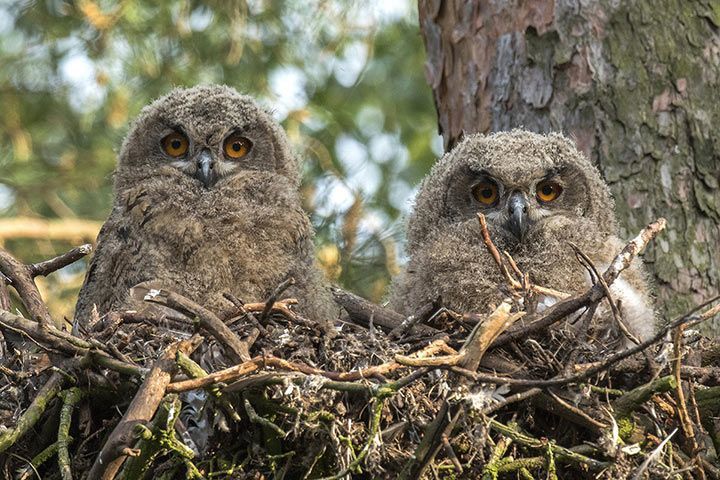
Reproduction
Nest
Do eagle owls build nests? No. The Eurasian eagle-owl doesn’t build its own nests. Instead, it nests in caves, hollows or abandoned eyries of other birds of prey.
Baby Owls
The baby birds hatch after around 35 days of incubation. There are usually two to four baby Eurasian eagle-owls, which weigh around two ounces (60 grams). They usually stay with their parents for around five months.
They Are Monogamous
Once a Eurasian eagle-owl find its partner, they stay together for the rest of their days. During mating season, the male even feeds the female.
This fact sheet was submitted by animalfunfacts.net fan Sarah R. Thanks!
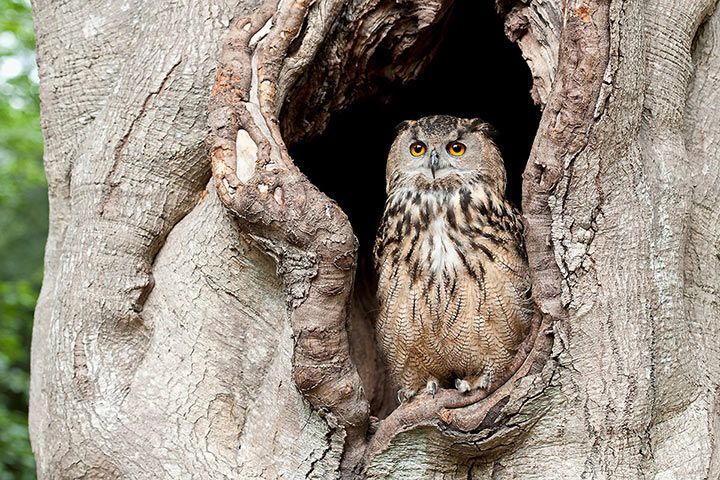
- Find Out More:
- Animals With an Amazing Sense of Hearing
- Watch Now on animalfunfacts.net:
 Animal Camouflage
Animal Camouflage















